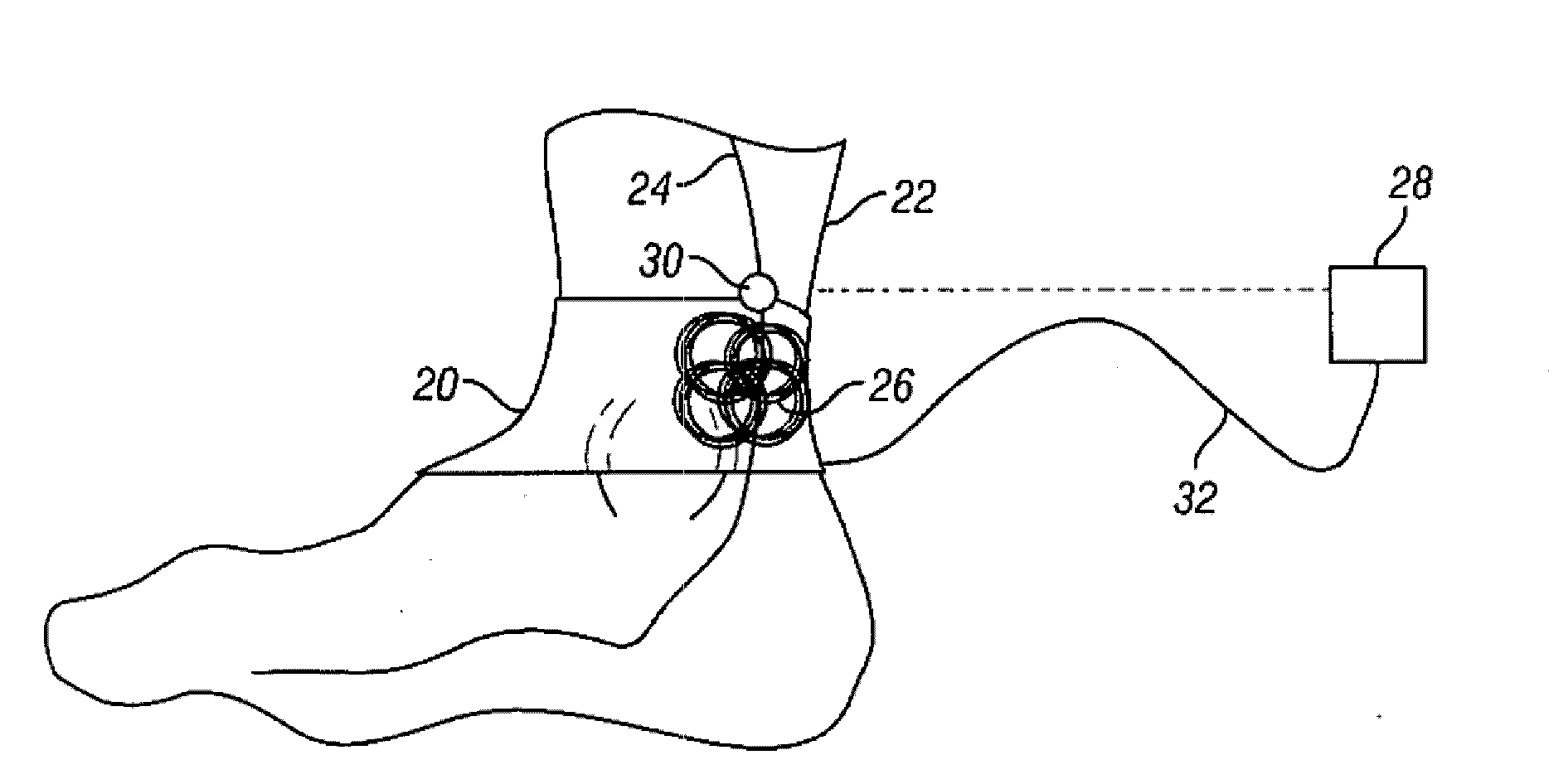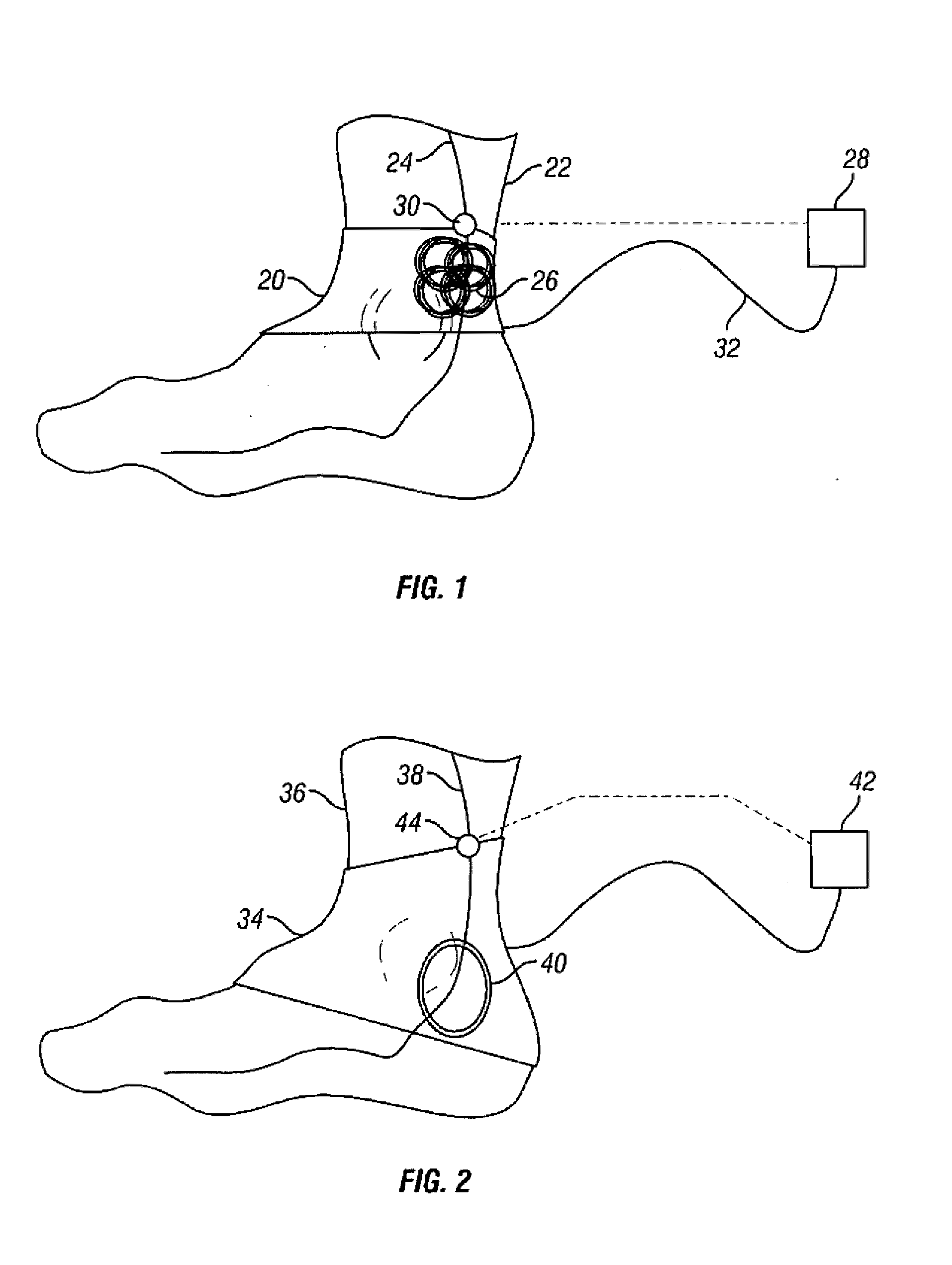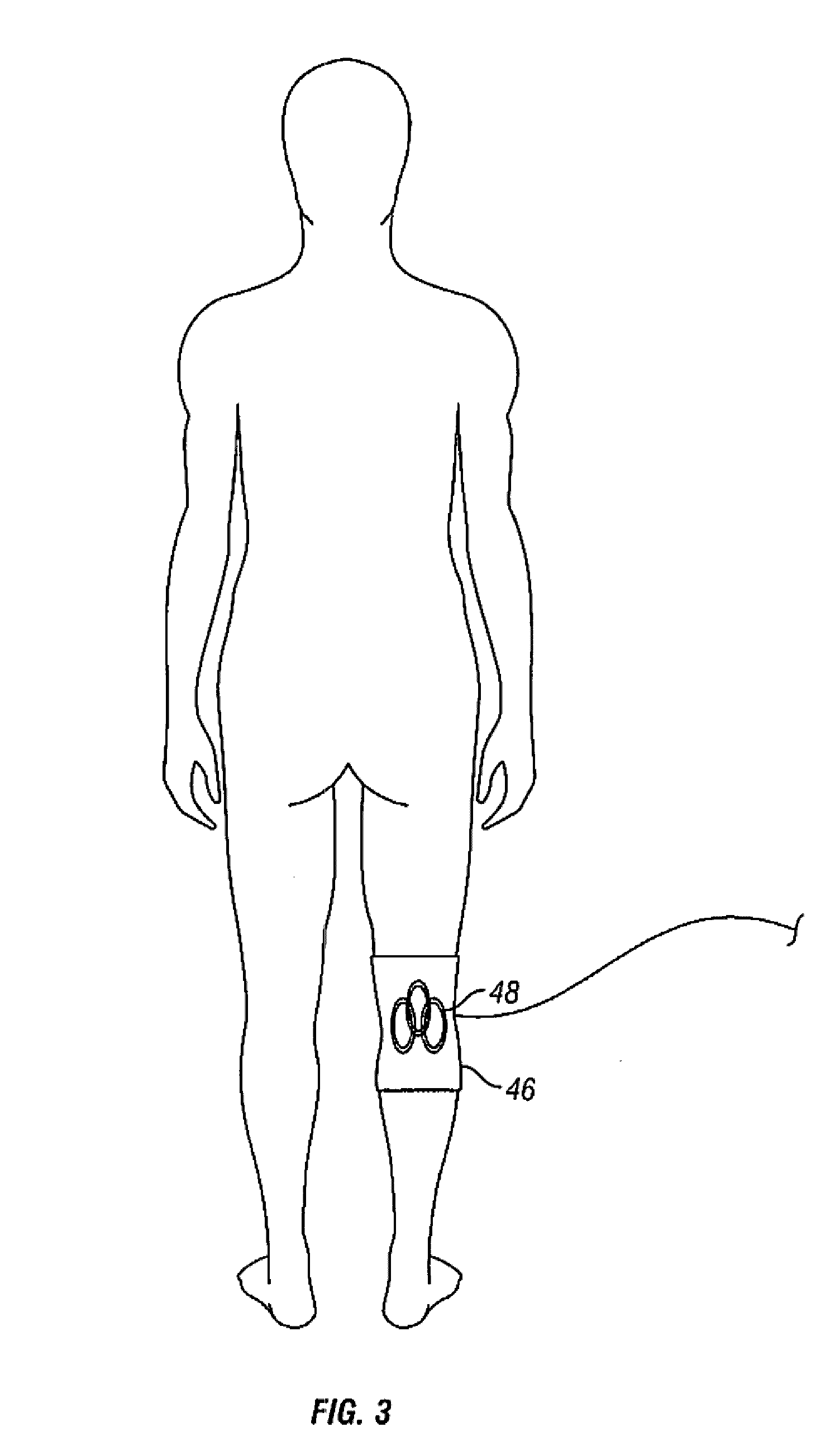Method and apparatus for magnetic induction therapy
a magnetic induction therapy and magnetic field technology, applied in the field of energy-emitting apparatus and methods, can solve the problems of nearly 30% or 4 million individuals being reportedly unsatisfied with their current therapy, each of these treatments exhibits severe limitations, and the economic cost of oab and ui is estimated to be in excess of $12 billion
- Summary
- Abstract
- Description
- Claims
- Application Information
AI Technical Summary
Benefits of technology
Problems solved by technology
Method used
Image
Examples
first embodiment
[0049]Referring first to FIG. 1, the invention includes a coil wrap 20, which is depicted as disposed over ankle 22 circumferentially to surround a portion of tibial nerve 24. Because tibial nerve 24 is targeted, this embodiment is particularly suited for the treatment of OAB and VI. In other embodiments of the invention, coil wrap 20 may be configured to surround other body parts that contain a portion of tibial nerve 24 or of other nerves branching from or connected to tibial nerve 24, still making these embodiments suitable for treating OAB and VI. In still other embodiments of the invention, coil wrap 20 may be configured for surrounding body parts that contain other nerves when treatments of other ailments are intended.
[0050]Coil wrap 20 may be manufactured from a variety of materials suitable for wearing over ankle 22. Preferably, coil wrap is produced from a soft, body-compatible material, natural or synthetic, for example, cotton, wool, polyester, rayon, Gore-Tex®, or other ...
third embodiment
[0063]Referring now to FIG. 3, the invention includes a coil wrap 46 configured for wrapping over the popliteal fossa of a patient, in the region of the knee, to stimulate the posterior tibial nerve (not shown). The configuration and structure of coil wrap 46 reflect the body portion covered by coil wrap 46, but the key system components of coil wrap 46, such as the type, number and disposition of the coils (for example, the use of overlapping coils); the connections of the coils with a logic controller; and the use of one or more sensors (also not shown) to detect nerve conduction are all comparable to those in the previously described embodiments.
fourth embodiment
[0064]Referring now to FIG. 4, the invention includes a footrest or foot cradle 48, which is structured to contain at least a portion of a foot 50. One or more coils 52 are enclosed within cradle 48, and a sensor 54 is disposed along the pathway of tibial nerve 55, sensing conduction in tibial nerve 55, and is also connected to a logic controller 56. Coils 52, sensor 54 and logic controller 56 may be arranged in different configurations, in the same manner as in the preceding embodiments.
[0065]Cradle 48 may be made from a variety of materials and may be monolithic, or have a hollow or semi-hollow structure to enable the movement of coils 52 within cradle 48, as described in greater detail below. Preferably, cradle 48 has an ergonomically design allowing the ankle and heel of the patient to be retained within cradle 48, in a position that matches the positions of stimulating coils 52 to the area of stimulation. The design of cradle 48 provides for a particularly comfortable delivery ...
PUM
 Login to View More
Login to View More Abstract
Description
Claims
Application Information
 Login to View More
Login to View More - R&D
- Intellectual Property
- Life Sciences
- Materials
- Tech Scout
- Unparalleled Data Quality
- Higher Quality Content
- 60% Fewer Hallucinations
Browse by: Latest US Patents, China's latest patents, Technical Efficacy Thesaurus, Application Domain, Technology Topic, Popular Technical Reports.
© 2025 PatSnap. All rights reserved.Legal|Privacy policy|Modern Slavery Act Transparency Statement|Sitemap|About US| Contact US: help@patsnap.com



